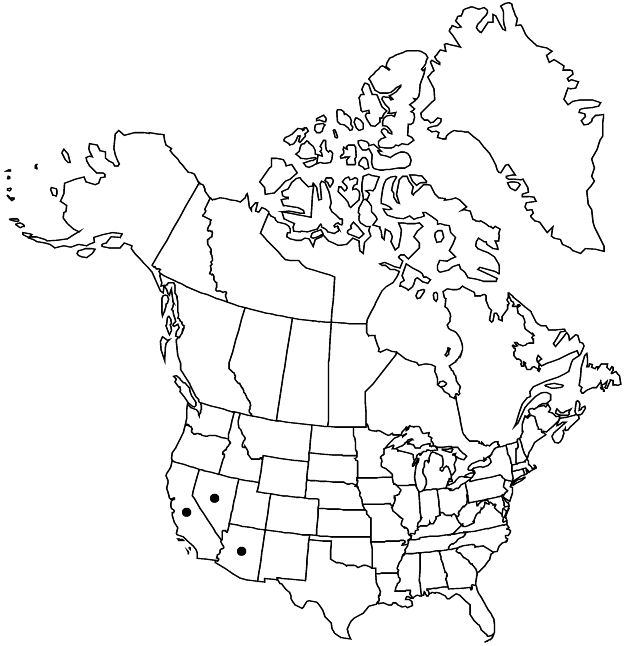Euphorbia schizoloba
Proc. Amer. Acad. Arts 5: 173. 1861.
Herbs, perennial, with thick rootstock. Stems slender, ascending, often sinuous, many, densely branched near base, 10–50 cm, usually glabrous, usually glaucous. Leaves: petiole 0–1 mm; blade broadly oblanceolate to obovate, 10–20 × 3–9 mm, base usually acute, occasionally short-attenuate, rarely obtuse, margins entire, apex usually acute, occasionally obtuse, acuminate to cuspidate, surfaces usually glabrous, usually glaucous; venation pinnate, sometimes obscure, midvein prominent. Cyathial arrangement: terminal pleiochasial branches (1–) 3–4 (–5), each 1–3 times 2-branched; pleiochasial bracts broadly ovate to subcordate, usually similar in size to, occasionally wider than, distal leaves; dichasial bracts distinct, broadly ovate to almost reniform, base obtuse, margins entire, apex obtuse, acuminate to cuspidate; axillary cymose branches 0–2 (–4). Cyathia: peduncle 0.3–1 mm. Involucre campanulate to broadly turbinate, 2.2–3 × 2–2.5 mm, glabrous; glands 4, irregularly semicircular to trapezoidal or elliptic-truncate, 0.8–1.5 × 1–2.2, margins strongly crenate or dentate; horns usually absent, if present then straight, 0.1–0.2 mm, generally equaling teeth on gland margin. Staminate flowers 12–20. Pistillate flowers: ovary glabrous; styles 1–1.2 mm, 2-fid. Capsules oblong-ovoid, 3.5–4 × 3.8–5 mm, 3-lobed; cocci rounded, smooth, glabrous; columella 3.3–3.8 mm. Seeds gray to whitish, oblong cylindric, 2–3 × 1.5 mm, irregularly shallowly pitted to almost smooth; caruncle conic, 0.6 × 0.6 mm.
Phenology: Flowering and fruiting spring–summer.
Habitat: Desert mountains and canyon slopes, rocky and gravelly soils.
Elevation: 500–1800 m.
Distribution

Ariz., Calif., Nev.
Discussion
Euphorbia schizoloba is a desert perennial that occurs on bluffs and ledges in the Mojave and Sonoran Deserts. Sparsely pubescent plants of E. schizoloba are known from Arizona and are best represented by several collections from the Mazatzal and Sierra Ancha mountains in Gila County from between 1000 to 1800 meters. George Engelmann published two names for this species almost simultaneously in 1861 (E. schizoloba and E. incisa). Although the authors have not been able to determine which publication has priority, Engelmann himself cited E. incisa as a synonym of E. schizoloba (in W. H. Brewer et al. 1876–1880, vol. 2), as did J. B. S. Norton (1899). Also, the type specimen at MO was annotated by Engelmann as E. schizoloba, and there is no mention of the name E. incisa on the sheet.
Selected References
None.
Lower Taxa
"connate" is not a number. "distinct" is not a number."connate" is not a number. "distinct" is not a number.